The Camino Pilgrim Passport, or Credencial, is more than just a memento — it’s a modern echo of the medieval “letters of safe conduct” once issued to pilgrims travelling to Santiago de Compostela on the Camino de Santiago. While times have changed, this simple folded booklet remains a crucial companion on your Camino journey.
Get your passport from your local Camino Society. It helps them fund their projects and share information with other pilgrims. It's also a good place to meet people, have a chat, and give back to the community.
Functioning as an official record of your progress, the Pilgrim Passport is stamped at key points along the route — from churches and hostels to cafés and town halls. These stamps not only create a tangible memory of your experience, they also serve a practical purpose. If your goal is to receive the Compostela, the official certificate of pilgrimage, you’ll need to show evidence of walking at least the final 100 kilometres (or cycling 200km) into Santiago.
Beyond regulations, the Passport brings a sense of ritual and connection to the long history of pilgrimage — but does it still hold the same spiritual weight it once did?
Table of contents
What is the Pilgrim Passport?
The Pilgrim Passport is something you will take with you as you walk along the Camino de Santiago. The Pilgrim Passport has panels with boxes where you can collect the different stamps along the way. These are usually collected by pilgrims in the place where they sleep such as an Albergue or hotel but they can also be obtained in churches, town halls and many other places along the routes to Santiago.
Correos, the Spanish postal service, has special Camino stamps available to pilgrims in many post offices along the Camino de Santiago, including the post office in Rua do Franco, Santiago de Compostela.
Essentially, the Pilgrim Passport is proof that you have walked at least 100km (or cycled at least 200km) of your chosen Camino route and will enable you to get the Compostela Certificate at the end of your journey. It is also a great souvenir of your time on the Camino and you can fill out a passport even if you aren’t planning to walk 100km. Once you reach Santiago de Compostela, you will bring the Pilgrim Passport to the Pilgrim’s Office with you.
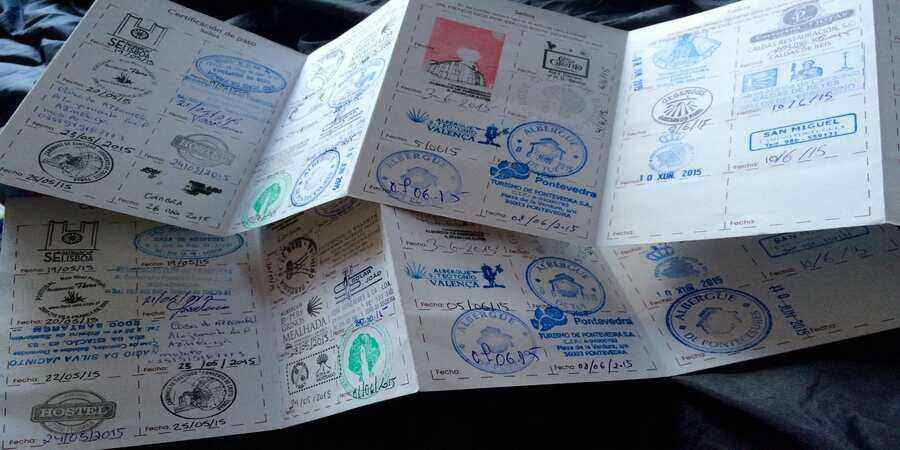
Where can I get my Pilgrim Credencial?
Where can I get my Pilgrim Credencial? You can easily obtain one before travelling from American Pilgrims on the Camino, Camino Society of Ireland, Australian Friends of the Camino, Confraternities of St. James, authorized Spanish associations, or various shops and churches along the route. Collect the necessary stamps for your Compostela certificate in Santiago.
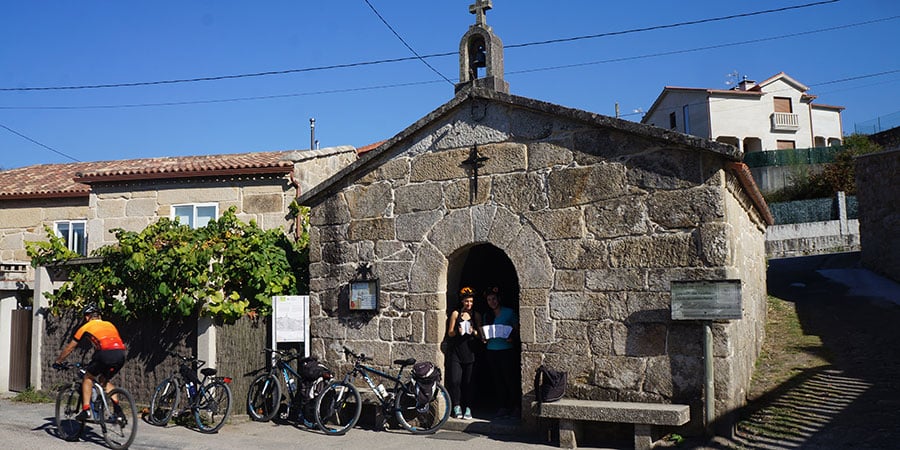
The Pilgrim Passport issued by the Cathedral of Santiago de Compostela and the Confraternities of St. James around the world also includes simple guidelines about the best ways to use the Pilgrim Passport:
- This Credencial is intended for those pilgrims who’d like to walk, go on horseback, cycle or travel by boat and then complete the last few km on foot and take the pilgrimage to Santiago.
- The Credencial has two practical purposes: admission to hostels offering Christian hospitality along the way; and to obtain the Compostela from the Cathedral in Santiago which certifies the pilgrimage has been completed.
- The Compostela is issued to those who have made the pilgrimage with a Christian motivation: devotonis affectul vel voti pietatis causa – motivated by devotion, a vow or piety.
- The Compostela is also issued to those who arrive at the Tomb of the Apostle having travelled the last 100km on foot or on horseback; the last 200km by bike or 100 nautical miles by boat and finishing the last few km on foot.
- Organised groups with a support vehicle or on bicycles are asked to find alternative accommodation from pilgrim hostels, Albergues.
- The bearer of the Credencial accepts these conditions.

A Blessing for your Journey
You will find a pilgrim blessing printed on the back of the Credencial:
In the name of our Lord Jesus Christ, receive this rucksack, the habit of your pilgrimage, so that, having atoned, you hasten to prostrate yourself at Saint James’ feet, where you yearn to arrive and, after having completed your journey, you come to us joyful with the help of God, who rules over the world without end. Amen.
Receive this staff as support for the journey and your efforts during your pilgrimage so that you are able to overcome the hoards of enemies and thus arrive safely at Saint James’ feet and, after having completed your journey, you come to us joyful with the assent of the same God, who lives and reigns forever and ever. Amen.
(Codex Calixtinus Sermón “Veneranda dies” Li, 17 Century)
You will also find a pilgrim’s prayer on the map in the Credencial:
St James, Apostle, chosen among the first, you were the first to drink the cup of the Master and you are the great protector of pilgrims. Make us strong in faith and happy in hope on our pilgrim journey, following the path of Christian life, and sustain us so that we may finally reach the glory of God the Father. Amen
We hope you found this page helpful and if you have any questions about walking the Camino or would like help booking your trip, please don’t hesitate to contact us.
Get a quote on our Camino Planner
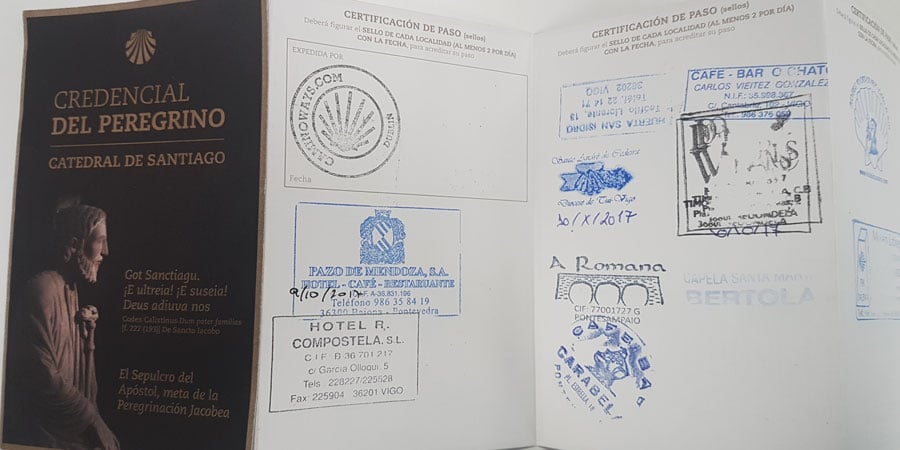
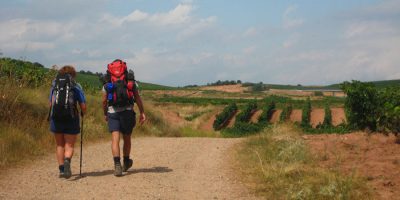
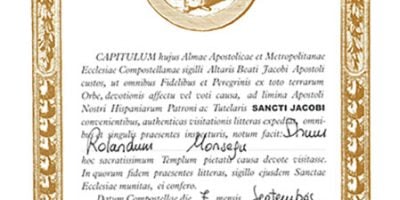

Thoroughly enjoyed learning more about the credencial. We are excited for our first pilgrimage in May 2023. The information shared along the way helps us prepare both mentally and physically for the journey!! These inspiring words are very helpful.
Hi Jack, thanks for leaving a comment and I’m delighted you found the information useful. Buen Camino!
I’m starting in Santiago de Compostela and walking to finestera, murxia and back. Where in Santiago de Compostela can I pick up a passport ?
Hi Charlie, if you click the links under the heading ‘Where can I get my Pilgrim Passport?’, it will take you to a list of the places, towns and cities where you can collect your passport.
Hi there, just became alert to your blog through web search, and found that it’s truly informative. I am gonna watch out for updates. I will be grateful if you continue this in future. A lot of people will be benefited from your writing. Cheers!
I am walking from Jean Pied de Port to Pamplona can i get a pilgrim passport for this and if so where.
Hi Angela, thank you for your message. Yes you can get your pilgrim passport in St Jean. There is a pilgrim’s office in the town, located at Rue de la Citadelle, no. 39. You can also order one from one of the Confraternities of St James worldwide.
We have arrived in Baiona, Spain and had a fabulous night and start our walk to Santiago today. This is our 3rd walk with Camino Ways and the service is fantastic!
One week until I head to Ferrol to start my Camino Ingles, am hiking it solo and collecting donations towards the Alzheimer Society. I am so looking forward to this as I have also walked 160km of the Frances in 2019 and in 2023 I hiked from Santiago de Compostela to Finisterre. Each time is the most amazing experience, both physically and psychologically, challenging, uplifting, humbling… Buen Camino to all those walking the Way of St. James, Jakobsweg…